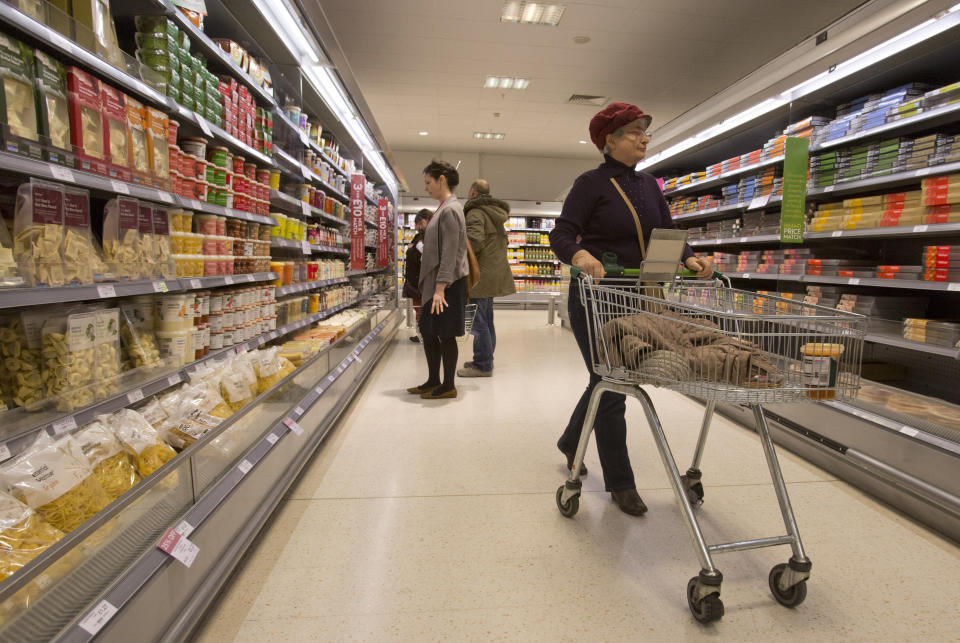Coronavirus: UK grocery prices 'fall back' to pre-lockdown levels

Grocery prices have returned to pre-pandemic levels, after a 2.5% rise at the beginning of COVID-19 lockdowns.
There has been a gradual deflation through the summer as price promotions returned to normal levels, according to the research by the Institute for Fiscal Studies, funded by the Nuffield Foundation and the Economic and Social Research Council.
Using real-time data on millions of grocery transactions (covering food, drink, toiletries, cleaning products and pet food) up until 9 August, the analysis shows that by the first week of August, the price level for groceries was about 0.5% higher than it was at the beginning of the year.
An initial 8% reduction in the range of grocery products bought, which occurred in March, has persisted, suggesting an ongoing reduction in consumer choice.
Martin O’Connell, deputy research director at the IFS and an author of the research, said the initial price inflation was driven by retailers cutting back on promotions at the onset of lockdown.
“As cases of COVID-19 are now rising and restrictions reintroduced, it remains to be seen whether another bout of grocery inflation will follow,” he said.
The initial surge occurred much more in full-line supermarkets such as Tesco (TSCO.L) and Sainsbury’s (SBRY.L), than in discounter supermarkets such as Lidl and Aldi.
READ MORE: Coronavirus: Christmas affordability worry for 'more than half' of UK consumers
The research showed that there was a 15% fall in the frequency of promotions at the beginning of lockdowns, accounting for more than half of the price spike.
What’s more, by the beginning of August, promotions that entail price discounts (for example, ‘20% off’) had returned to pre-pandemic levels. In contrast, quantity promotions (for example, ‘buy two for £2’) remain depressed.
The IFS research also demonstrated a pronounced move to grocery shopping online. In the first month of lockdown, the share of grocery spending online was 20% higher than for the same period in 2019. By the beginning of August, the increase compared with 2019 was nearly 70%.
It also found that the inflationary spike during the first month of lockdown was experienced by households across the income distribution, but was bigger for better-off households. However, the gap in inflation experience across different income levels has since closed.
Watch: What is a V-shaped economic recovery?

 Yahoo Finance
Yahoo Finance 